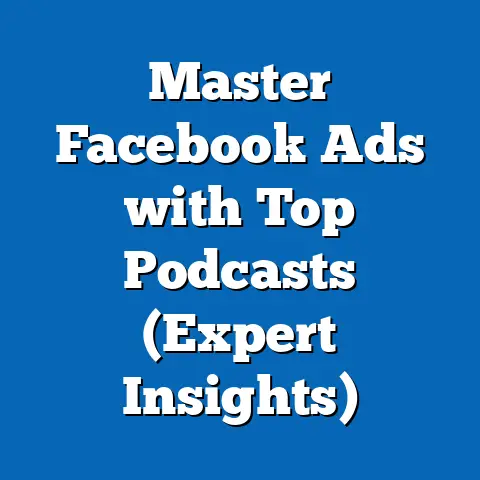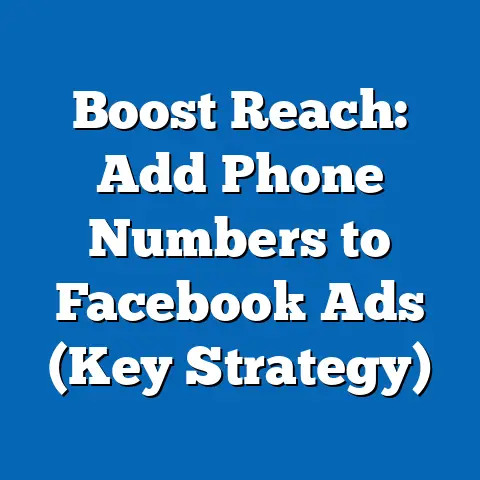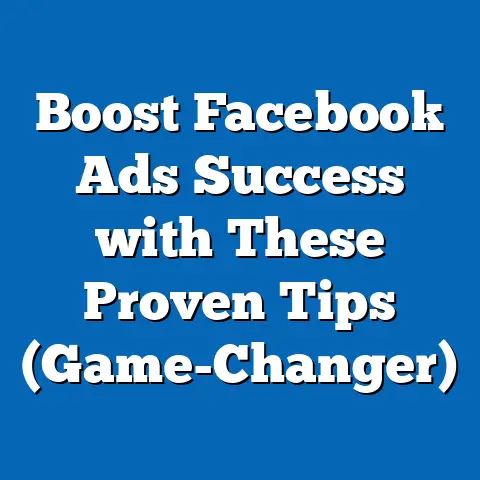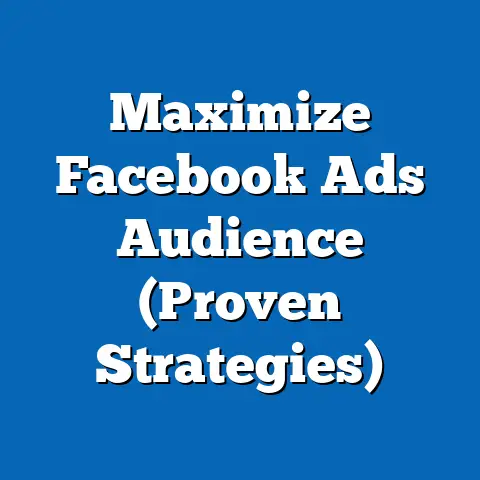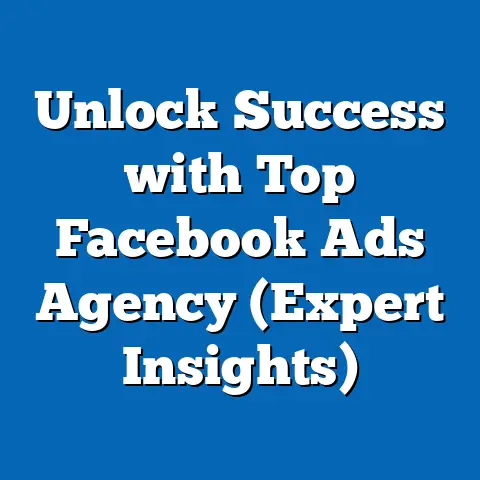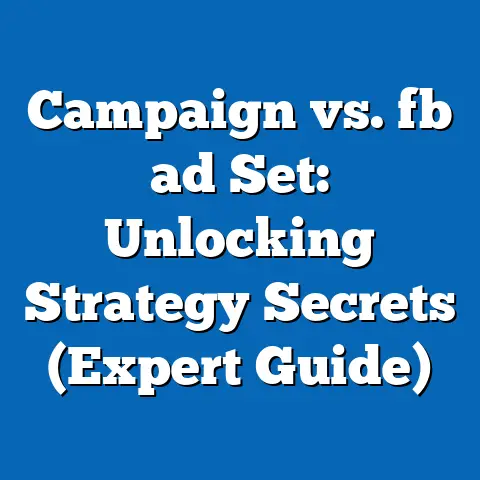Transform Facebook Video Ads for 2025 (Proven Strategies)
The world of digital marketing is in constant motion, a swirling vortex of trends, algorithms, and consumer behaviors. As a digital marketing specialist, I’ve seen firsthand how quickly strategies can become outdated. And nothing exemplifies this more than Facebook video ads. They were revolutionary, then commonplace, and now, they need a serious upgrade to stay relevant.
Think of your business as a lifestyle. You want to upgrade it, right? Better experiences, more freedom, greater success. Facebook video ads, when done right, can be a key part of that transformation. In 2023, we’ve seen the rise of short-form video, the importance of authenticity, and the power of personalized messaging. But 2025 is just around the corner, and the game is changing again. To stay competitive, we need to adapt, innovate, and embrace new strategies.
In this guide, I’ll share proven strategies to transform your Facebook video ads for 2025. We’ll explore the current landscape, dive deep into audience understanding, craft compelling content, leverage emerging technologies, and master the art of measurement and iteration. By the end, you’ll have a roadmap to elevate your brand presence, boost customer engagement, and achieve a true lifestyle upgrade for your business.
The Current State of Facebook Video Ads
Let’s start with a reality check. What’s working now, and what’s falling flat? As of 2023, Facebook video ads are still a powerhouse, but they’re not the guaranteed success they once were.
Engagement Rates: While video generally outperforms other ad formats, engagement rates are becoming increasingly fragmented. Users are bombarded with content, and their attention spans are shrinking. According to a recent study by HubSpot, the average attention span is now just 8 seconds. That means you have less than 10 seconds to grab someone’s attention and convince them to keep watching.
Viewer Preferences: Short-form video is king. TikTok’s influence is undeniable, and users are accustomed to quick, engaging content. Facebook Reels are a direct response to this trend, and marketers are finding success with bite-sized videos that deliver value quickly.
Content That Performs: Authenticity is paramount. Users are tired of polished, overly produced ads. They want to see real people, real stories, and real value. Behind-the-scenes glimpses, customer testimonials, and user-generated content are all performing well.
Algorithm Changes: Facebook’s algorithm is constantly evolving, prioritizing content that users find engaging and relevant. This means that your video ads need to be not only visually appealing but also highly targeted and optimized for engagement.
My Experience: I remember when simply running a video ad on Facebook was enough to generate leads. Now, it requires a multi-faceted approach. I had a client in the fitness industry who was struggling to get results from their video ads. We revamped their strategy, focusing on short, authentic videos showcasing real people achieving their fitness goals. We also implemented hyper-targeted audience segmentation. The results were dramatic, with a significant increase in leads and conversions.
Key Takeaway: Facebook video ads are still valuable, but they require a strategic and adaptable approach. Understanding current trends, user preferences, and algorithm changes is crucial for success.
Next Step: Analyze your current video ad performance. What’s working? What’s not? Identify areas for improvement based on current trends.
Understanding Your Audience
You can create the most visually stunning, technically advanced video ad in the world, but if it doesn’t resonate with your target audience, it’s a waste of time and money. Understanding your audience is the foundation of any successful Facebook video ad strategy.
Audience Segmentation: Broad targeting is a relic of the past. To truly connect with your audience, you need to segment them based on demographics, interests, behaviors, and even psychographics (values, attitudes, and lifestyles).
Tools and Techniques:
- Facebook Insights: This built-in tool provides valuable data on your existing audience, including demographics, interests, and engagement patterns.
- Audience Insights: This tool allows you to explore potential audiences based on various criteria. You can discover their interests, behaviors, and even the pages they like.
- Custom Audiences: Create custom audiences based on your existing customer data, website traffic, or app activity.
- Lookalike Audiences: Expand your reach by creating lookalike audiences based on your existing custom audiences.
Psychological Triggers:
- Storytelling: Humans are wired for stories. Craft video ads that tell a compelling story and connect with your audience on an emotional level.
- Emotional Appeal: Tap into emotions like joy, fear, hope, or nostalgia to create a memorable and impactful video ad.
- Relatability: Show your audience that you understand their challenges and aspirations. Use relatable characters, situations, and language.
Leveraging Facebook Insights and Audience Insights:
- Identify Target Demographics: Understand the age, gender, location, and education level of your target audience.
- Explore Interests: Discover their hobbies, passions, and interests.
- Analyze Behaviors: Track their online activity, purchase history, and engagement patterns.
- Refine Ad Strategies: Use this data to create highly targeted video ads that resonate with your audience’s specific needs and desires.
My Experience: I worked with a local restaurant that was struggling to attract new customers. By using Facebook Insights, we discovered that their target audience was primarily young professionals who were interested in healthy food and outdoor activities. We created video ads showcasing their fresh ingredients, outdoor seating, and healthy menu options. The ads were a hit, and the restaurant saw a significant increase in foot traffic.
Key Takeaway: Audience understanding is not a one-time task. It’s an ongoing process of research, analysis, and refinement. The more you know about your audience, the more effectively you can connect with them through your video ads.
Next Step: Conduct a thorough audience analysis using Facebook Insights and Audience Insights. Identify your target demographics, interests, and behaviors.
Crafting Compelling Video Content
Now that you understand your audience, it’s time to create video content that captures their attention and inspires action.
Proven Strategies:
- Storytelling Techniques: Use a clear narrative structure, compelling characters, and a relatable message.
- Visual Aesthetics: Invest in high-quality visuals, including lighting, composition, and editing.
- Sound Design: Don’t underestimate the power of sound. Use clear audio, engaging music, and sound effects to enhance the viewing experience.
Authenticity in Video Ads:
- Showcase Your Values: Let your brand’s values shine through in your video ads.
- Highlight Your Mission: Explain your company’s mission and how you’re making a difference.
- Be Transparent: Don’t be afraid to show the real people behind your brand.
Optimizing Video Length, Structure, and CTAs:
- Video Length: Keep your videos short and sweet. Aim for 15-30 seconds for most Facebook video ads.
- Structure: Start with a hook that grabs attention, deliver your message quickly, and end with a clear call to action.
- CTAs: Use strong and specific calls to action, such as “Shop Now,” “Learn More,” or “Sign Up Today.”
My Experience: I’ve learned that the first few seconds of a video ad are critical. If you don’t grab the viewer’s attention immediately, they’ll scroll right past. I worked with an e-commerce client who was selling handmade jewelry. We created a video ad that started with a close-up shot of a beautiful piece of jewelry, followed by a quick montage of the artisan creating the piece. The ad generated a high click-through rate and a significant increase in sales.
Key Takeaway: Compelling video content is a blend of art and science. It requires creativity, technical skill, and a deep understanding of your audience.
Next Step: Brainstorm video ad ideas that align with your audience’s interests and your brand’s values. Focus on creating short, engaging videos with clear calls to action.
Leveraging Emerging Technologies
The future of Facebook video ads is being shaped by emerging technologies like augmented reality (AR), artificial intelligence (AI), and 360-degree video.
Augmented Reality (AR):
- Interactive Experiences: AR allows users to interact with your products or services in a virtual environment.
- Try-On Filters: Let users try on your products virtually, such as makeup or clothing.
- Virtual Tours: Offer virtual tours of your business or property.
Artificial Intelligence (AI):
- Personalized Ads: AI can help you create highly personalized video ads based on user data.
- Automated Optimization: AI can automate the process of optimizing your video ad campaigns for maximum performance.
- Chatbots: Use chatbots to answer questions and provide customer support within your video ads.
360-Degree Video:
- Immersive Experiences: 360-degree video allows users to explore a virtual environment from any angle.
- Virtual Events: Offer virtual tours of your business or property.
- Interactive Storytelling: Create immersive stories that put the viewer in the center of the action.
Examples of Successful Integration:
- Sephora: Uses AR to allow users to virtually try on makeup.
- Netflix: Uses AI to recommend personalized video ads based on user viewing history.
- Marriott: Uses 360-degree video to offer virtual tours of their hotels and resorts.
My Experience: I’ve been experimenting with AI-powered video ad creation tools, and I’m impressed with the results. These tools can generate personalized video ads in minutes, saving time and resources. I believe that AI will play an increasingly important role in the future of Facebook video ads.
Key Takeaway: Emerging technologies offer exciting new opportunities to enhance your Facebook video ads and create more engaging and immersive experiences for your audience.
Next Step: Research emerging technologies like AR, AI, and 360-degree video. Identify ways to integrate these technologies into your video ad campaigns.
Measuring Success and Iterating
The final piece of the puzzle is measuring the success of your video ad campaigns and iterating based on the data.
Key Performance Indicators (KPIs):
- Reach: The number of unique users who saw your video ad.
- Impressions: The number of times your video ad was displayed.
- Engagement Rate: The percentage of users who interacted with your video ad (likes, comments, shares).
- Click-Through Rate (CTR): The percentage of users who clicked on your video ad.
- Conversion Rate: The percentage of users who took the desired action after watching your video ad (e.g., making a purchase, signing up for a newsletter).
- Cost Per Acquisition (CPA): The cost of acquiring a new customer through your video ad campaign.
A/B Testing:
- Test Different Video Ad Formats: Experiment with different video lengths, styles, and calls to action.
- Test Different Targeting Options: Try different audience segments and interests.
- Test Different Bidding Strategies: Experiment with different bidding options to optimize your ad spend.
Analyzing Campaign Performance:
- Facebook Ads Manager: Use Facebook Ads Manager to track your video ad performance and identify areas for improvement.
- Google Analytics: Integrate Google Analytics with your Facebook Ads account to track website traffic and conversions.
- Third-Party Analytics Tools: Consider using third-party analytics tools to gain deeper insights into your video ad performance.
Data-Driven Decision-Making:
- Use Data to Inform Your Strategy: Base your decisions on data, not gut feeling.
- Continuously Optimize Your Campaigns: Regularly monitor your video ad performance and make adjustments as needed.
- Stay Up-to-Date on Best Practices: The world of Facebook video ads is constantly evolving, so stay informed about the latest best practices.
My Experience: I’ve found that A/B testing is essential for optimizing video ad performance. I worked with a travel agency that was struggling to get bookings through their Facebook video ads. We ran A/B tests on different video ad formats, targeting options, and calls to action. We discovered that short videos showcasing stunning destinations with a clear call to action to “Book Now” performed the best. As a result, we saw a significant increase in bookings.
Key Takeaway: Measuring success and iterating is an ongoing process of experimentation, analysis, and optimization. By tracking your KPIs, conducting A/B tests, and analyzing your campaign performance, you can continuously improve your Facebook video ad results.
Next Step: Set up tracking for your Facebook video ad campaigns. Identify the KPIs that are most important to your business. Start A/B testing different video ad formats and targeting options.
Conclusion
Facebook video ads are a powerful tool for driving brand awareness, customer engagement, and ultimately, a lifestyle upgrade for your business. By embracing the strategies outlined in this guide, you can transform your video advertising efforts and achieve significant results.
Remember, the key to success is to stay adaptable, innovative, and focused on your audience. As we approach 2025, the landscape of Facebook video ads will continue to evolve. By staying ahead of the curve, experimenting with new technologies, and continuously optimizing your campaigns, you can ensure that your video ads remain relevant and effective.
Don’t wait until 2025 to start implementing these strategies. Start today, and you’ll be well on your way to a brighter and more engaging advertising future. Embrace the challenge, experiment with new ideas, and never stop learning. Your business, your brand, and your lifestyle will thank you for it.

